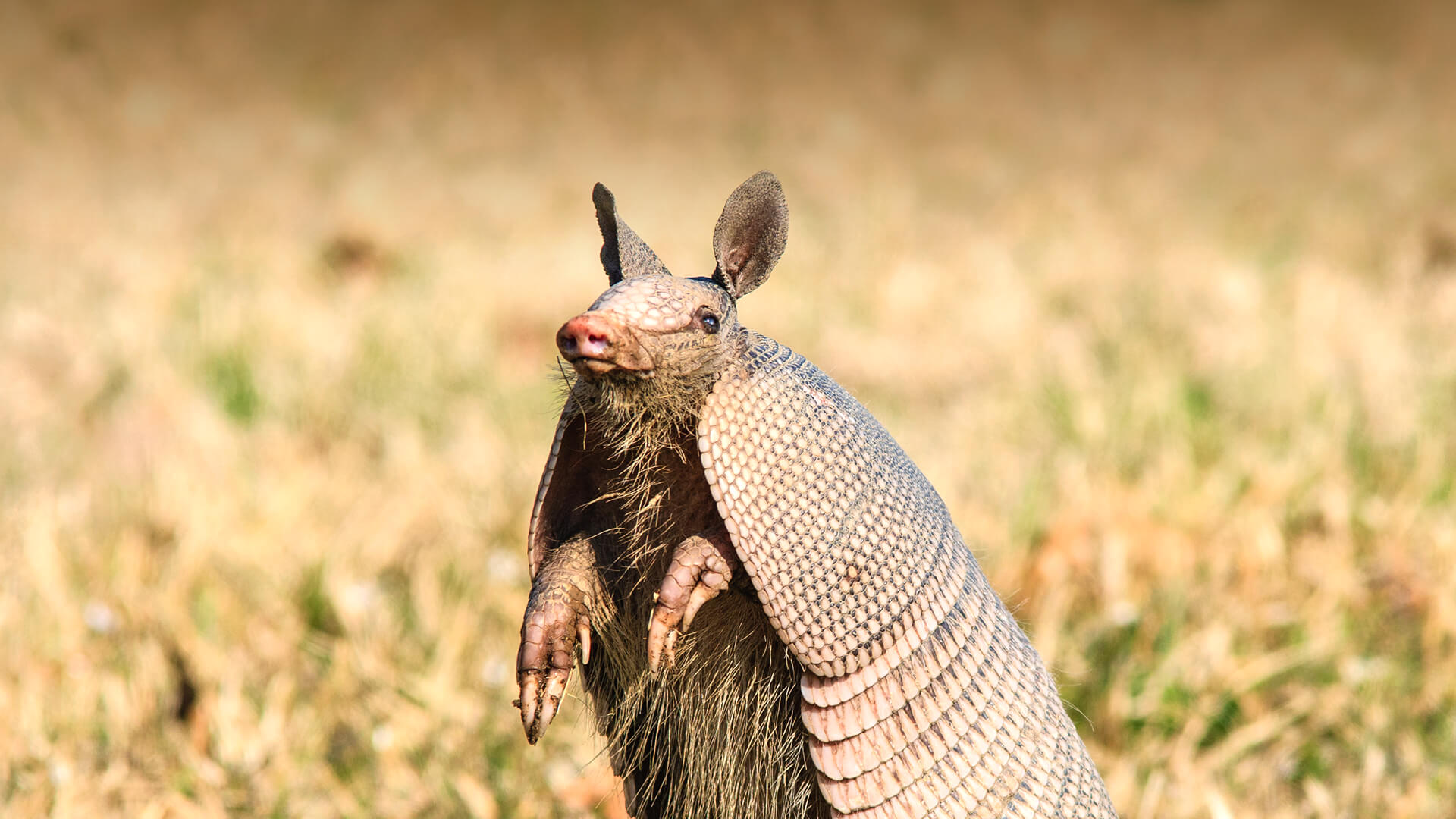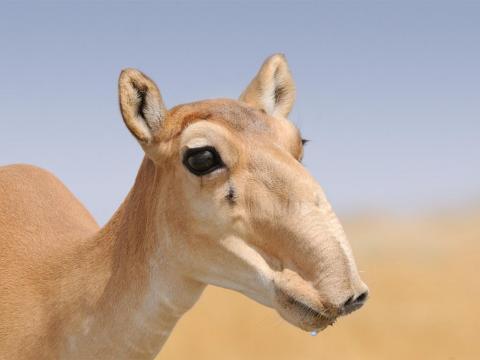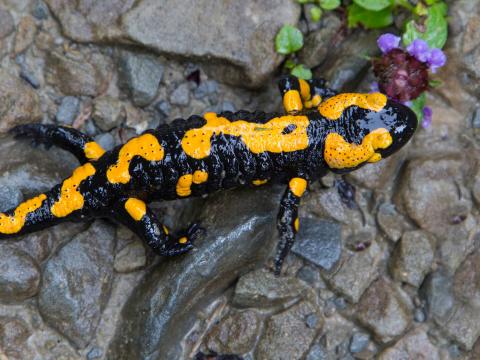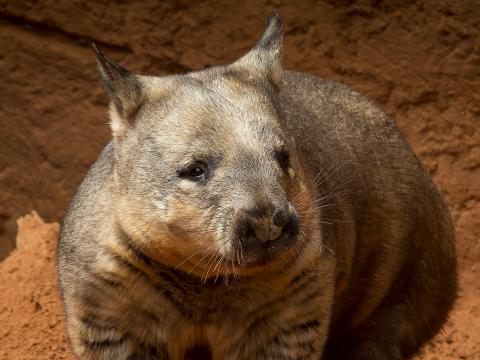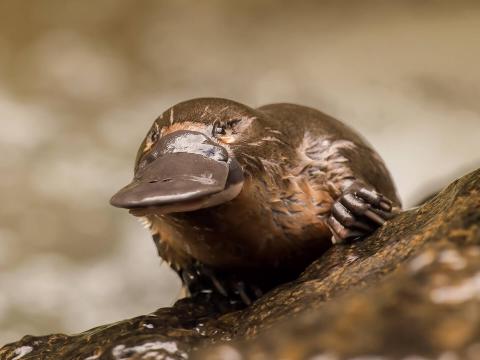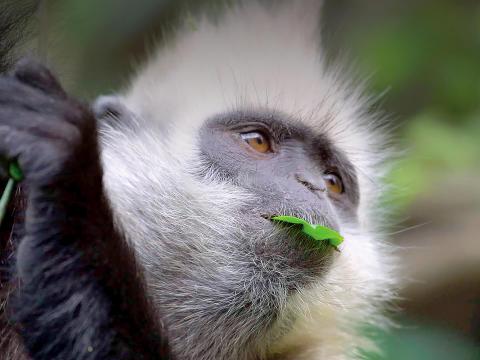Armadillo
- Class: Mammalia (Mammals)
- Order: Cingulata
- Family: Dasypodidae
- Genera: 8
- Species: 20
ABOUT
A mammal with a shell? The armadillo is really strange looking. Although most armadillos look like they are bald, they do have wiry hairs on the sides and the belly. Some people refer to the hairs as curb feelers, since armadillos can feel their way around an area at night as the hairs touch objects.
The one thing that tells everyone they are looking at an armadillo is the roly-poly shell with "armored" bands. The number of bands depends on the species. These hardened, overlapping sections give most armadillos a pleated look.
Although the bands are tough like fingernails, the shell is flexible, with softer skin that expands and contracts between the bands. Armadillos also have long claws for digging and foraging for food. Their peg-shaped teeth crunch on insects, an armadillo's favorite food.
Looks can be deceiving. In the looks department, the nine-banded armadillo appears naked, while the pink fairy armadillo is mostly furry and has little shell. In fact, it looks like a mole wearing a fancy, armored headpiece and cape! In the size department, armadillos range in length from the pink fairy armadillo at 3 inches (8 centimeters) to the giant armadillo, which can be up to 5 feet (1.5 meters) long from head to tail and weigh up to 132 pounds (60 kilograms).
Band on the run. There are 20 armadillo species in the Americas; most live in Central or South America. Only the nine-banded armadillo is native to the United States. As body size and food sources vary, so do the home range and habitat of each armadillo species. In fact, everything varies when you're talking about armadillos!
Most armadillos like wetlands with thick shade and sandy soil that is easy to dig in. But they are also found in thorn scrub, grasslands, and wooded areas. Armadillos burrow in grass, hollow logs, and sometimes underground.
The heat is on. The majority of armadillos are solitary most of the time. They travel to look for food and try to avoid danger. When the weather is cold, armadillos may group together in burrows, often making a large nest of leaves, with grass inside. They are not good at staying warm on their own and don’t seem to mind having others around. Seven-banded armadillos sometimes share the burrow with several others of the same gender.
Armadillos have little body fat and thin shells, so they cannot maintain their internal temperature as most mammals do. This causes their behavior to change from season to season. For example, in hotter months, armadillos may be nocturnal, foraging at night when it is cooler and easy to move around. When the weather gets cooler, the same armadillos may start foraging earlier in the day, becoming more diurnal.
Shell game. An armadillo's hard shell is simply modified skin that serves as one way they protect themselves. When an armadillo feels threatened, it usually runs, digs, or presses its body down in the dirt to keep from getting flipped over. The three-banded armadillo is the only type of armadillo that can roll up into a ball for protection: its teardrop-shaped head plate seals the opening so there are no chinks in the armor. Threats to armadillos include domestic dogs, wild cats, birds of prey, and humans.
All my exes live in Texas. Nine-banded armadillos are also known as long-nosed armadillos because of their longer head and snout. Despite the common name, they can have eight or nine bands, depending on where they live. This is the type commonly seen in Texas, where it was adopted as the official state mammal.
Armored king. Besides being the largest of the armadillos, the giant armadillo also has the most teeth, up to 100! It often rises on its back legs, balancing with its tail. It digs a burrow out of large ant nests, which are common in the Chaco region, using its six-inch claws. Little else is known about this amazing creature, one of the most endangered mammals in South America.
HABITAT AND DIET
All in the family. Armadillos are insectivores, and their closest relatives are sloths and anteaters. Although most of their diet consists of insects and invertebrates, armadillos also eat fruit, eggs, and small animals. They even eat carrion.
When the weather is cold, armadillos may group together in burrows, often making a large nest of leaves, with grass inside. They are not good at staying warm on their own and don’t seem to mind having others around.
Smell that? A sensitive nose helps armadillos sniff out tasty treats. Nine-banded armadillos grunt constantly while rooting around for food. If the food is underground, they use their long front claws to dig it up. This digging is why many people consider armadillos pests. Farmers and gardeners do not want armadillos rooting around for bugs while destroying their crops or plants.
At the San Diego Zoo and San Diego Zoo Safari Park, armadillos eat a special insectivore pellet diet that is served dry or with water to make a paste, mealworms, crickets, and fruit or cooked root vegetables.
FAMILY LIFE
Little balls of joy. Breeding season for armadillos varies, but there are some armadillos that can reproduce year-round. Gestation is anywhere from two to five months. Armadillos do not form bonds, and the father does not stay to help raise the young.
A baby armadillo is called a pup. Armadillos can have from 1 to 12 pups in a litter. When the pups are born, their shell is soft and gray and feels like leather. They can roll up into a ball within hours of being born. The shell hardens within a few days. The mother nurses the pups for 2 to 4 months. Armadillos usually become mature between 9 and 12 months of age.
The life span of an armadillo ranges from 4 to 30 years.
CONSERVATION
Threats and hazards. Humans affect the armadillo in many ways. Some people consider them pests and call exterminators to rid them from their gardens. Armadillos are often run over by cars as they cross roads looking for food and new habitat. Many people eat them and use their shells for novelties like purses.
Another growing threat to all armadillos is habitat destruction: all except the nine-banded armadillo Dasypus novemcinctus are decreasing in population. Five armadillo species are classified as vulnerable.
These animals are truly industrious excavators that are great at digging, serve as excellent insect control, and both confuse and delight most humans who come across them.

